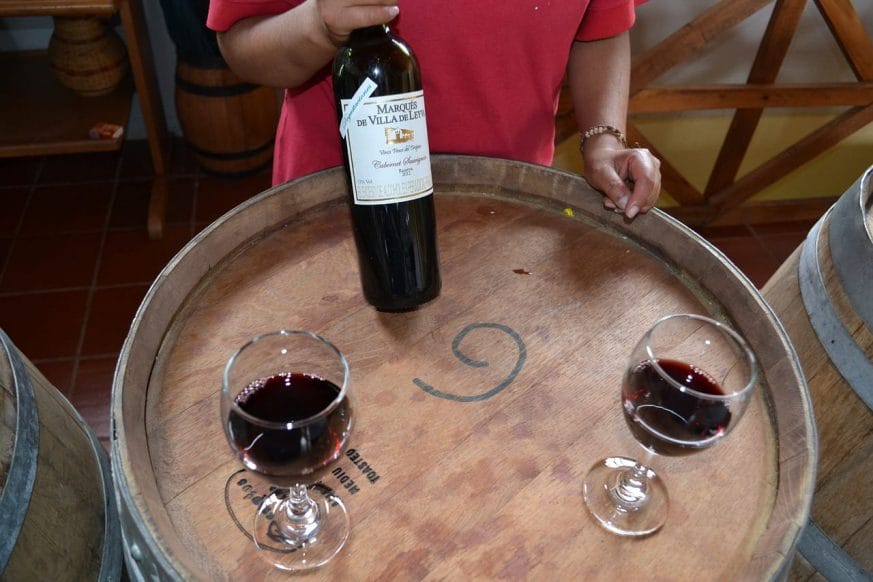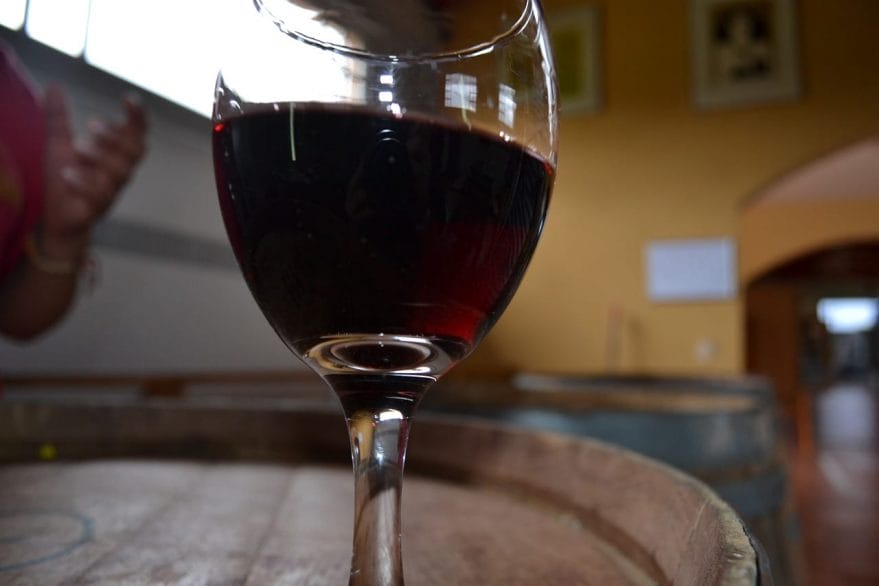It can be so frustrating trying to pick out a wine to serve at an event or meal, or even just if you’re looking to try something new!
If you’re searching for a complex and full-bodied wine to serve, Malbec and Cabernet Sauvignon are probably both wines that you have come across.
However, because these two wines have so much in common, it can be hard to tell what the key differences are between the two.
Luckily, this guide will present you with everything you need to know to pick between Malbec and Cab Sav. We’ll cover all the main points of interest, including:
- Origins of the wines
- Comparative taste profiles
- Ideal food pairings
- How to choose between the two
And more! Let’s dive into it so you can learn all about these amazing wines.

Understanding Malbec: Origins and Characteristics
Malbec originated in southwestern France, in a region known as Cahors. This picturesque area has a rich history of winemaking dating all the way back to ancient Rome.
Legend has it that Malbac gets its name from a Hungarian peasant who spread the grapes across France (though of course this can’t be proved!).
For a long time, Malbec was produced only in Cahors and then sent to Bordeaux to be sold around Europe.
Due to trading restrictions in Bordeaux, the Malbec was often sold at a cheaper price than other wines – which led to it being not quite as popular as some other reds.
On top of this, susceptibility to vine disease and a brutal frost in 1956 led to a massive reduction in the amount of Malbec produced in France.
By this time, Malbec had spread out far beyond the Cahors and landed most notably in Argentina in the mid-1880s.
It exploded in popularity, and to this day is one of the most well-known Argentinian wines. Today, Malbec is still most famously grown in Argentina, though it is produced all over the world.
Argentinian, Chilean, and other Malbecs grown in warm climates tend to have a robust, fruity flavor and deep color.
French Malbecs are rich and dark with slightly more tannin structure, though similar wines can be produced in both regions with enough aging.
Understanding Cabernet Sauvignon: A Global Favorite
Cabernet Sauvignon is a massively popular wine and is even the most widely planted red wine grape worldwide.
While there is a lot of mythology surrounding its origin, it most likely was born through an accidental cross between Cabernet Franc and Sauvignon Blanc grapes in the 1600s.
It first began being produced in the Bordeaux region and grew in popularity throughout the centuries.
While it’s still produced in southwestern France, this is usually a blend with other wines (particularly Cabernet Franc or Merlot). Cab Sav has also been produced in Italy’s Tuscany region since at least the early 1800s.
However, like Malbec, Cabernet Sauvignon’s journey away from Europe is what brought it to world popularity.
It’s well known for being produced in Southern California, where the heat allows the grapes to reach full ripeness – leading to a fruitier, fuller-bodied, and stronger wine.
It’s also grown in Argentina (though it’s not as popular as Malbec there), as well as Australia and New Zealand.
Cabernets are high in tannins, giving them a sour and bold flavor, with great aging potential. They’re a popular wine to have while dining!
Comparing Taste Profiles: Malbec Vs. Cabernet Sauvignon

So now we know where Cabernet Sauvignon and Malbec come from, what do they taste like?
Fruitiness and Flavor Depth
Malbec is a fruitier sweeter wine, with a deep and rich flavor. Though it varies massively by vintage, many Malbecs (especially Argentinian ones) taste like blackberry, plum, black cherry, pomegranate, and/or raspberry.
It also often has notes of leather, coffee, tobacco, vanilla, black pepper, and other rich, dark flavors.
On the other hand, Cabernet Sauvignon is brighter and more complex in taste and usually less fruity.
While it might still have notes of blackcurrant or cherry, it is also more tart and has herbal flavors like violet rosemary (and even graphite). Many people also describe Cab Sav as tasting of green bell peppers (in a good way, of course!).
Tannin Levels
Tannins are the substances found in grape skin, bark, stems, and seeds, and they give wines their bitter, tart, and pungent flavor. They also add structure and complexity to the wines.
Cabernet Sauvignon has a higher level of tannins, making it tart and bold with very strong flavors. Malbec has medium tannin levels, giving it a softer flavor profile and a smoother finish.
Aging Potential
Due to the tannin levels and other structural components, Cabernet Sauvignon has a greater potential for aging than Malbec.
This also means that it often gains a soft, woody undercurrent from being aged in oak barrels. However, both varieties of wine age reasonably well.
Food Pairings: Getting the Best from Both Wines
Looking to serve one of these wines with dinner or looking for a perfect cheese pairing? You’ve come to the right place!
Malbec Pairings
Grilled meats and hearty meals are always great with a Malbec. Proteins like lamb chops, pork, and fattier fish such as salmon are all safe bets!
Malbec is also commonly served with dark meat poultry, creamy pastas, and earthy vegetables like beets, turnips, or potatoes.
If you’re looking for a cheese pairing, stick to semi-hard cheeses that aren’t too salty like asiago, cheddar, Colby, or gouda.
If you’re cooking the cheese you have more wiggle room, salads with gorgonzola, and melty, gooey soft cheeses will still go extremely well with Malbec.
Cabernet Pairings
If you’re serving red meat like steak or prime rib, cabernet is always a great choice!
It’s also amazing with gamier meats like venison or rabbit, as well as other foods that mimic that earthy flavor profile such as mushrooms, rosemary, and even ahi tuna.
You don’t always have to go fancy though; cabernet is also a great match with casual options like burgers and tacos.
Look for flavorful semi-hard to hard cheeses to pair with your Cabernet Sauvignon. This includes popular options like aged or extra sharp cheddar, gouda, or parmesan.
Choosing Between Malbec and Cabernet Sauvignon

So, what does this all mean? Which one should you choose?
At the end of the day, it really depends on the occasion as well as your own personal preferences.
One thing you can’t control is your price point and what’s available in your region.
Due to Cabernet Sauvignon’s massive popularity, it is more likely to be available at your local bottle shop and you’re probably able to get a better quality wine if you’re on a tight budget.
If you don’t have budget considerations, then it’s really dependent on what you want.
Malbecs are excellent for when you’re craving a fruity red or if you’re serving simple meat dishes, dark poultry, or fatty fish.
It’s also a nice drink to serve at casual get-togethers even if you’re not serving a full meal. Try it with a rich chocolate cake, tiramisu, or other cream or coffee-based desserts!
If you’re looking for a red that’s sure to be a fan favorite, then a Cabernet Sauvignon is the way to go.
This works for the opposite end of the price spectrum as well; when you’re looking to spoil yourself and your guests (if you have them) with a fine, aged red wine, you’re a lot more likely to end up with a Cab Sav!
It’s also a great option to serve with more refined main dishes such as filet mignon, prime rib, or ahi tuna.
Cabernet Sauvignon is a dinner party go-to and also a good bet to order if you know you want a red but you’re not sure what you’re after.
Also Read: Malbec Vs Merlot: Comparing Great Wine Varieties
Conclusion
Both Malbec and Cabernet Sauvignon are amazing, rich, and flavorful red wines that are beloved by many.
Cabernet Sauvignon is more popular, bolder, and more tannin-heavy, with a stronger alcohol content and flavor.
Malbec is smoother, fruitier, and rearer, but is still an amazing choice for many meals, gatherings, and social situations.
No matter which wine you choose: take care to pair it well with the meal or cheese you’re serving, and remember to always have at least one white wine and one non-alcoholic option if you’re hosting to make sure everyone is catered for!
FAQs
Malbec is generally lighter than Cabernet Sauvignon in terms of boldness and alcohol content. However, it is a denser and richer wine than Cabernet Sauvignon.
Due to its higher tannin content, Cabernet Sauvignon is generally a better wine for aging. Malbec can be aged as well though, but traditionally it is served younger than Cabernet Sauvignon.
Both Malbec and Cabernet Sauvignon are pretty full-bodied red wines, originating from southwestern France near the Bordeaux region.
They can also share similar fruity notes, like that of blackberry, black cherry, black currant, and plum, as well as peppery and vanilla tinges. However, the two types of wine are still quite different, especially for the experienced palette.
While Cabernet Sauvignon can be priced higher due to their status as being perceived as “fancier”, and often being aged for longer, your average grocery store bottle of Malbec fetches around the same price.
In fact, depending on the wine stores in your area, it’s likely that you’ll be able to find a cheap bottle of Cab Sav (that is still excellent) more easily than you’d be able to find a Malbec.
In short, Cabernet Sauvignon wines are more expensive when you’re looking at fine wines, but the two are comparable when you are looking at mid-range varieties!
- Moscato vs Roscato: A Comprehensive Comparison of Sweet Wines - December 15, 2023
- Should White Wine Be Chilled? Expert Insights on Serving Temperature - December 14, 2023
- Moscato vs Riesling: A Sweet Wine Showdown - December 8, 2023










